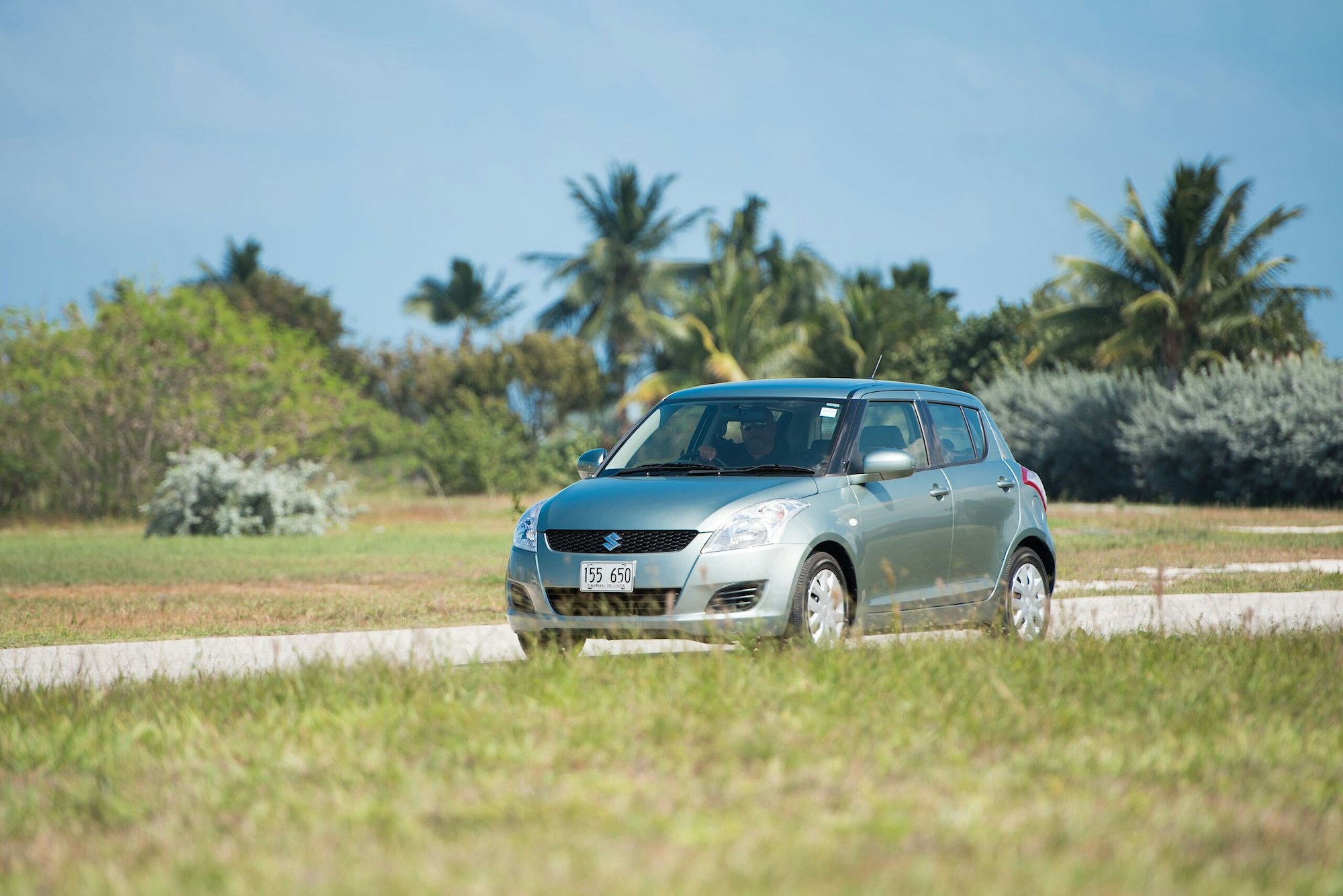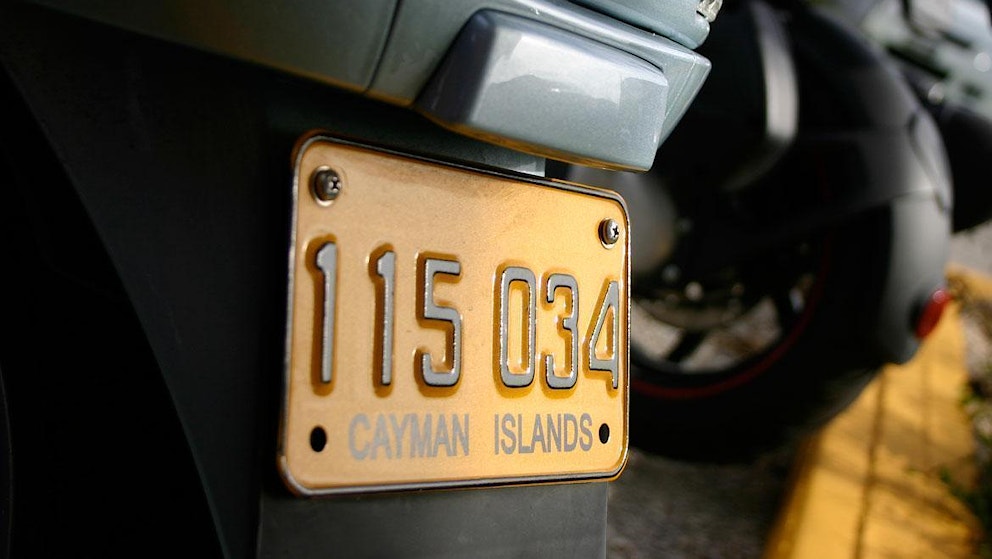
Driving in the Cayman Islands
Guide to driving in the Cayman Islands: find rules of the road, learn how to traverse roundabouts, regulations on kids and car seats and texting while driving.


With drivers from all corners of the world, where traffic laws can vary a great deal, and an increasing amount of new road construction occurring across the island, drivers in Cayman should be alert and exercise care when getting around. The following ‘rules of the road’ should be observed to ensure the safety of all persons sharing the road.
Click for more on renting a car in the Cayman Islands
General Rules
- We drive on the left-hand side of the road
- Seatbelts must be worn by all passengers, including those in the back
- Turning left on a red light, after a full stop, is allowed and is legal
- Mobile Phone Use: Using a mobile phone (unless hands-free) while driving is illegal
- Four-Way Stops: We have a few four-way stops. These work on the basis of whoever gets to the four-way stop first, proceeds first
- Speed Limits: The speed limit on the Island varies between 25mph-50mph. Fines are given to those who exceed the limit.
- School Zone Speeding: New legislation is due to come into effect which will see people lose their driving license for 6 months or a year if caught going 30mph (or greater) in a 15mph school zone. The current traffic regulation sets a CI$200 minimum fine for speeding in a school zone.
- Pedestrians: Right of way is given to pedestrians on pedestrian crossings
- Headlights must be fitted to dip left. Cars imported from the US take note!
- Fog Lights: The use of fog lights is illegal
- Overtaking: You cannot overtake if there is a solid single or double white (or yellow) line in the centre of the road
- Accidents: The law requires that in the event of an accident involving injury to a person, animal or property/vehicle, you must exchange names, addresses, date of birth, registration numbers and your insurance details. Alternatively, you can report the accident to the police within 24 hours
- Tinting: window tinting is a very good idea as it helps keep the heat out; however, there are specific rules as to how much tinting you can have. Front windows can be tinted, but must allow a minimum of 35% light transmission through. Rear windows can be made darker to a maximum of 15%. Persons exceeding these numbers can be fined $500 and imprisoned for up to six months.
- Tyres on the same axle have to have the same size and tread. You cannot mix a radial tyre tread with a cross pile tread.
Roundabouts

As a means of controlling traffic flow, roundabouts have proven very popular and there are now over two dozen in Grand Cayman, including a couple of three-lane roundabouts. If you are unfamiliar with roundabouts and want to avoid an accident, then please take note of the following rules.
- Keep in the left-hand lane if taking the first exit and indicate left.
- Keep in the middle lane if driving straight ahead and follow the lane marked with a straight-through arrow. Indicate left just before you exit.
- If taking a subsequent exit use the right-hand lane and indicate right, switching to your left indicator just before reaching your exit. When moving from the inner lane to outer lane prior to exiting look over your left shoulder to ensure someone is not overtaking you on the outside.
See the picture below for a visual aid on how to negotiate roundabouts.
General Roundabout Rules
Upon approaching or entering a roundabout, it is important to give your full attention. Be aware of the traffic around you and don’t just rely on your mirrors – you must account for your blind spots! Here are a few key rules to remember:
- Always travel around a roundabout in a clockwise direction. Never turn right onto a roundabout or you will turn into the oncoming, one-way traffic!
- All traffic approaching a roundabout must yield to the traffic that is already on it. All vehicles already on the roundabout have right of way and you must wait for space to get onto it.
- Use your indicators when approaching or exiting a roundabout. When turning left this should be obvious. When going straight across or turning right, you should indicate right as you approach the roundabout and then as you near your exit indicate left. Make sure to not overtake while on the roundabout. If a car is to your right and slightly ahead and they want to turn left, they have the right of way.
- Emergency vehicles. All emergency vehicles using lights and sirens have the right-of-way. The moment you hear or see an emergency vehicle behind you make sure to pull over to the left side of the road well before the roundabout entrance and allow them to pass. If you are on the roundabout when an emergency vehicle approaches behind you, never stop on the roundabout, continue to your exit and then pull safely over on the left shoulder to allow them to pass.
- When using mini roundabouts. Mini roundabouts are single lane roundabouts. Merge left when space is available and keep left of the painted circle until you reach your exit. All other cars must yield to the vehicle on the roundabout. Take caution when oversized vehicles such as flatbed trucks and fire trucks are on or approaching the roundabout as they may drive over all or part of the painted circle if necessary.
- When using multi-lane roundabouts. Keep in the left-hand lane if taking the first or second exit. Keep in the right-hand lane if taking a subsequent exit and maintain your position in the centre lane until the exit prior to the one you will be taking. When moving from the centre lane to the outer lane prior to exiting, look over your left shoulder to ensure someone is not overtaking you on the outside. Use your indicators. For a very useful little video on how to negotiate roundabouts see this YouTube video which the Cayman Islands Department of Transport produced. It explains very clearly which lane to be in, how to use your indicators and how to move across and around the roundabout.
Using the Centre Turning Lane
The turning lane in the centre of some roads is designed to help drivers turn across traffic, or merge into oncoming traffic. The lane should never be used for overtaking, and it is important to always look for approaching traffic.
School Buses & School Zones
Under the traffic law, when a school bus has its lights flashing and has stopped to allow children to get on or off, drivers are NOT permitted to pass the bus. This applies to vehicles approaching the bus from the opposite lane as well as those behind the bus.
If you approach a bus that is letting children off, stop at least 20 feet away and wait until the bus has pulled away before you continue driving.
Additionally, you should pay attention to the 15mph speed limits in dedicated school zones. At certain times of the day (between 7.30am-8.15am and 2pm-3.15pm approx), warning lights flash outside the schools, indicating to drivers that they need to reduce their speed to 15mph or less as there is an increased likelihood of children crossing the roads. The fines for speeding in a school zone are severe.
Children & Car Seats
Cayman Islands law (Traffic Law 2003 (revision) section 70) states that any child travelling in a motor vehicle must wear a seatbelt and if under the age of 14 must sit in the rear of the vehicle.
The law also states that a rear facing child’s car seat must not be fitted in a seat with a front airbag. Children’s car seats can be bought at The Baby Shoppe, Little Darlings and sometimes at Priced Right and Cost-U-Less.
Cell Phones & Texting While Driving
In accordance with Cayman law, a CI$150 fine is automatically issued to anyone who is seen talking on a mobile phone (unless it is hands-free) while driving.
In section 78 of the Traffic Act (2011), it states: “in order to use your cellular device while driving it must be “hands free” (securely mounted to the vehicle) with no more than one action of pressing a button to accept and end a call.
You are authorized to use your phone while driving if you are calling 911 to report an emergency, especially if it is unsafe or impractical to stop and park.
Finally, you may use your phone if your vehicle has come to a complete stop and is removed from the normal flow of traffic. It is illegal to use your mobile phone if you have stopped at a traffic light.
Cayman's DUI Regulations
Although the drinking and driving rules in Cayman are strict, driving under the influence continues to be one of the leading causes of fatalities and serious collisions on Cayman’s roads.
If you do intend to drink prior to using Cayman’s roads, ensure that you take a bus or taxi.
If you are caught either driving or sitting in the driver’s seat of a car while over the legal limit of 0.07% (70mg of alcohol in 100ml of blood), you will be disqualified from driving in Cayman for 12 months and you will be fined CI$1,000, or imprisoned for six months.







